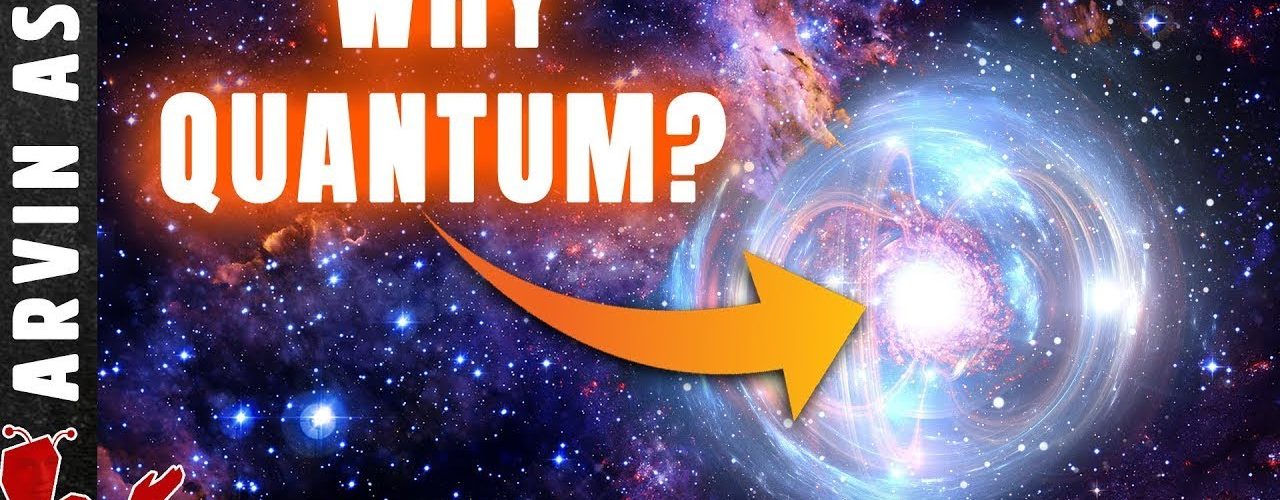Get your SPECIAL OFFER for MagellanTV here: https://try.magellantv.com/arvinash – It’s an exclusive offer for our viewers! Start your free trial today. MagellanTV is a new kind of streaming service run by filmmakers with 3,000+ documentaries! Check out our personal recommendation and MagellanTV’s exclusive playlists: https://www.magellantv.com/genres/sci…
Background videos:
Quantum Field theory: https://www.youtube.com/watch?v=jlEov…
Quantum mechanical model of the atom: https://www.youtube.com/watch?v=fP2TA…
Chapters:
0:00 – The beginning of science
2:07 – Magellan offer
2:30 – Classical physics
3:40 – What is a black body?
4:24 – The Ultraviolet catastrophe
5:30 – Solution by Max Planck – Planck’s law
7:03 – Why electrons should hit the nucleus
8:04 – The Bohr model of the atom
9:48 – A problem with Schrodinger’s equation
10:30 – The Dirac equation and quantum field theory
11:51 – Is the universe Probabilistic or deterministic?
12:58 – What would a non-quantum universe look like?
Summary:
What do we think the universe is quantum? What if the universe was not quantized?
Classical mechanics was doing just fine after Isaac Newton reduced nearly all mechanical phenomena to a single powerful equation: F=MA, James Clerk Maxwell also solved the mystery of electricity and magnetism. Classical physics is continuous. This means you can always keep dividing things into smaller pieces. But scientists realized that classical physics had some major flaws because certain phenomena could not be explained, like the color of a hot glowing body.
In 1900, Lord Rayleigh and James Jeans had used experimental data to come up with a law for how all objects emit electromagnetic radiation. The problem was that according to their theory a black body will send out energy in any frequency range allowed by the temperature. But for very energetic objects at temperatures above 5000 Kelvin, their theory predicts that the object should radiate away all its energy until it reaches absolute zero. It is called the ultra-violet catastrophe.
The solution to this problem marked the end of the classical world and the beginning of the quantum world. In 1900, Max Planck had come up with an equation to explain black body radiation. He treated radiation as being quantized, released only in discrete quanta of energy. So the emission of radiation was limited to quanta of energy, proportional to a Planck’s constant. E=hf, where the quanta of energy, E, is equal to the frequency f times Planck’s constant.
Another phenomenon that only quantum mechanics could explain was why an electron does not lose all its energy when orbiting a nucleus. If electrons orbit around the nucleus, then their circular motion means that they are constantly accelerating. But an accelerating electron means that it must be emitting photons, which means it must be losing energy. This would mean that the electron would continuously lose its orbital energy, and eventually hit the nucleus. So atoms could not exist.
Niels Bohr solved the problem by showing that only special orbits are allowed around the nucleus where the angular momentum of the electron is a whole number multiple of Planck’s constant over two pi. Light is only emitted or absorbed when electrons jump from one orbit to another.
Now to fully grasp our quantized world, we also need to account for special relativity. It was realized that the Schrodinger equation is wrong because it does not treat space and time equally. Paul Dirac fixed this problem by reformulating Schrodinger’s equation to threat space and time equally. This became the =Dirac Equation.
His equation, and later others, do not quantizing objects, but they quantize fields. And this gave rise to quantum field theory, or QFT. In QFT, particles are treated quantizations of fields. This allows us to treat space and time equally such that it satisfies special relativity.
Another big departure from classical mechanics is the idea of probabilities. The wave function in the Schrodinger equation is related to the probability of finding the particle in a given location if you were to measure it. Prior to measurement, we cannot know in advance where it will be. So the outcome is not deterministic, but probabilistic. Only the probabilities of the alternative possible outcomes are deterministic.
#quantummechanics
#quantumuniverse
The world and the universe would be very different if it was not quantized. It would be a deterministic world where, theoretically the future would be predictable. But the world would not exist as we know it because, atoms could not form, quantum particles would not form. There would be no energy and no radiation. Without quantum mechanics, you could still have spacetime because general relativity does not require quantization. But this universe would be filled with nothing.







